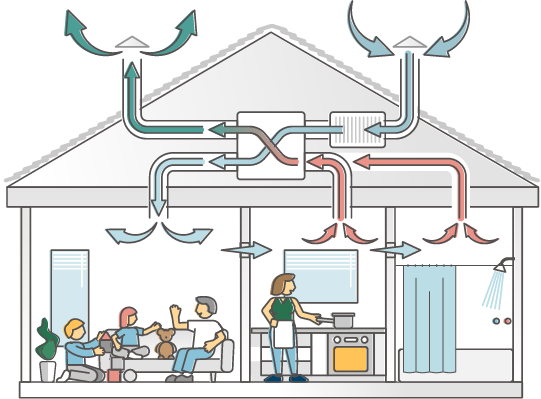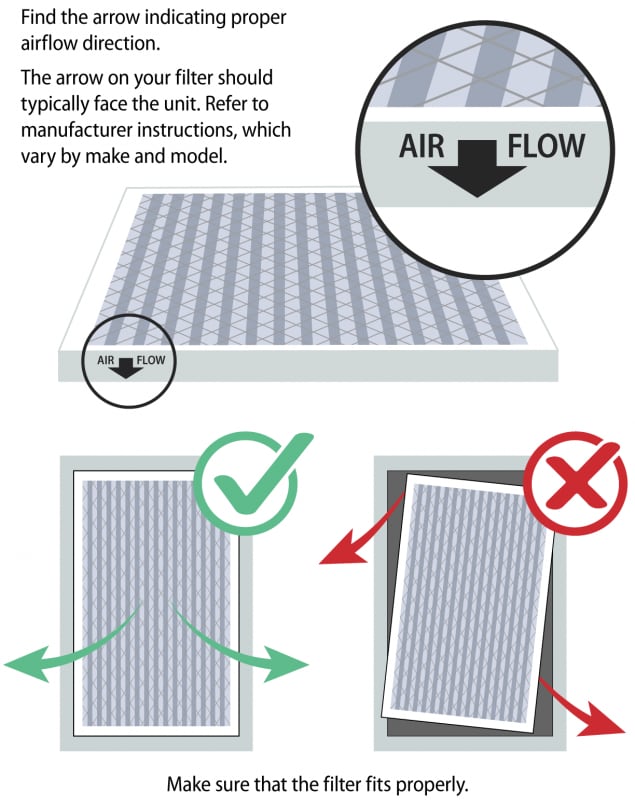Home Ventilation Melbourne: Best Practices for Year-Round Air Quality
Comprehending the Value of Home Ventilation for a Healthier Living Environment
Home air flow plays a crucial role in keeping a healthy living atmosphere. It promotes the exchange of interior and outdoor air, which is crucial for boosting air high quality. Without appropriate ventilation, homes can become reproducing premises for pollutants and allergens. The consequences of inadequate air circulation can be significant. This raises the query of how house owners can properly apply air flow approaches to guard their wellness and wellness. Recognizing these methods is critical.

The Basics of Home Air Flow
Home air flow works as a necessary component of indoor air quality and comfort. It involves the procedure of exchanging stale indoor air with fresh outside air, therefore decreasing humidity and controlling temperature. Appropriate ventilation systems can consist of natural methods, such as open home windows and vents, along with mechanical systems, such as exhaust fans and air exchangers. Effective home air flow helps avoid issues like interior mold and mildew development and the buildup of damaging bits. It also enhances overall power effectiveness, as well-ventilated spaces can preserve comfortable temperatures with much less reliance on heating and cooling down systems. Comprehending the essentials of home air flow is important for property owners seeking to develop a much healthier living setting for themselves and their family members.

Usual Sources of Indoor Air Air Pollution

Lots of might not understand it, indoor air contamination can originate from numerous resources within a house. Typical factors include unpredictable natural substances (VOCs) released from paints, solvents, and cleaning products. Household appliances, such as gas stoves and fireplaces, can release hazardous gases like carbon monoxide and nitrogen dioxide. In addition, mold and mildew and mold flourish in damp areas, releasing spores that impact air high quality. Pet dander, allergen, and plant pollen can gather inside, further exacerbating contamination degrees. Smoking cigarettes indoors creates hazardous chemicals that remain in the air. Finally, building materials, including asbestos and formaldehyde, can off-gas harmful substances. Acknowledging these sources is crucial for keeping a healthier interior environment and advertising reliable air flow approaches.
Health And Wellness Results of Poor Ventilation
Interior air contamination can have considerable health effects, especially when ventilation is insufficient. Poor air flow can bring about the buildup of dangerous pollutants, such as unpredictable natural compounds, mold, and particle issue. This build-up might result in respiratory system concerns, consisting of asthma, allergies, and chronic obstructive pulmonary disease. Individuals might experience symptoms like migraines, tiredness, and irritation of the eyes, nose, and throat. Susceptible populaces, such as youngsters and the elderly, go to greater threat for serious health results. Long-lasting exposure to badly aerated atmospheres can likewise add to much more major conditions, consisting of cardio illness. Ensuring appropriate air flow is vital for preserving a healthy living setting and reducing the danger of health and wellness difficulties connected with indoor air contamination.
Efficient Ventilation Methods for Your Home
Correct air flow is vital for preserving a healthy and balanced interior atmosphere, and applying reliable methods can greatly boost air quality. Property owners can start by guaranteeing that exhaust followers are installed in bathroom and kitchens to remove excess wetness and odors. Opening home windows frequently permits fresh air to flow, especially during moderate weather. In addition, utilizing air cleansers with HEPA filters can aid catch airborne contaminants. For homes with heating and cooling down systems, maintaining cooling and heating systems and changing filters on a regular basis is essential for peak efficiency. Incorporating natural air flow strategies, such as cross-ventilation, can additionally enhance air movement. Securing any type of leakages in home windows and doors stops unwanted drafts, which can interrupt regulated airflow, inevitably leading to improved indoor air top quality and convenience.
Preserving Optimum Air Quality Year-Round
To preserve excellent air quality year-round, property owners have to take on a positive approach to handling their interior atmosphere. Frequently keeping an eye on interior air top quality is important; this consists of monitoring for pollutants such as dust, mold, and unpredictable organic substances (VOCs) Implementing reliable linked here air flow systems, such as exhaust fans and air purifiers, can substantially minimize airborne pollutants. Additionally, regular maintenance of cooling and heating systems guarantees peak performance and air blood circulation. Home owners ought to likewise take into consideration humidity degrees, as too much dampness can lead to mold development. Seasonal changes may necessitate modifications in air flow techniques to fit differing exterior air quality. By prioritizing these techniques, home owners can produce a much healthier space, promoting total wellness for all passengers throughout the year.
Regularly Asked Inquiries
Exactly How Can I Tell if My Home Demands Better Ventilation?
To figure out if a home calls for much better air flow, one should observe indications such as persistent humidity, mold and mildew development, musty smells, condensation on windows, or boosted allergic reaction signs, indicating inadequate airflow This Site and possibly inadequate interior air high quality.
What Are the Indications of Poor Indoor Air Quality?

Can Houseplants Improve Indoor Air Quality Efficiently?
The effectiveness of houseplants in enhancing indoor air quality is questioned. While some research studies recommend they can soak up toxic substances and create oxygen, their overall effect might be minimal compared to proper air flow and air filtration systems.
How Typically Should I Adjustment My Air Filters?
The frequency of air filter modifications normally depends upon use and filter kind. Normally, it is recommended to replace filters every three months, though households with allergies or family pets may require more frequent changes for excellent performance.
Are There Any Particular Ventilation Equipments for Allergic Reaction Sufferers?
Lots of air flow Homepage systems, such as HEPA-filtered units, effectively reduce allergens airborne. Home Ventilation Melbourne. These systems catch plant pollen, dirt, and pet dog dander, providing allergic reaction patients with a cleaner, healthier indoor atmosphere while taking care of air quality properly
It assists in the exchange of indoor and outside air, which is essential for boosting air high quality. Home ventilation offers as a vital component of indoor air quality and convenience. It includes the procedure of trading stagnant indoor air with fresh exterior air, thus decreasing humidity and regulating temperature. Indoor air pollution can have considerable health and wellness ramifications, specifically when ventilation is inadequate. Proper ventilation is necessary for preserving a healthy indoor setting, and executing effective strategies can substantially boost air high quality.